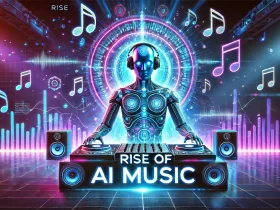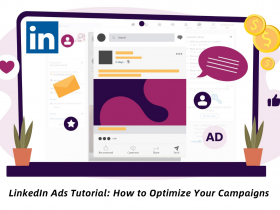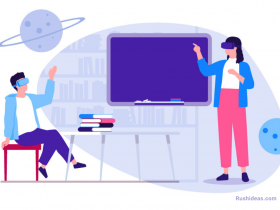Chat GPT, launched on November 30th, 2022, is a powerful natural language processing tool that enables effortless text generation for a wide range of applications including quizzes, language translation, and paragraph creation. Developed by OpenAI, Chat GPT boasts an impressive accuracy level, making it the ideal solution for obtaining precise and reliable answers to your questions.
What is ChatGPT
ChatGPT is an AI-powered chatbot developed by OpenAI, one of the leading research organizations in artificial intelligence. It is built on the GPT (Generative Pre-trained Transformer) architecture, which is a type of deep learning algorithm that uses large amounts of data to generate human-like responses to text-based queries.
ChatGPT is designed to be a versatile and flexible chatbot that can be trained on a wide range of topics and domains. It can be used for a variety of applications, such as customer service, language translation, virtual assistants, and more. ChatGPT can understand and respond to natural language queries in real-time, making it a powerful tool for automating conversations and interactions with users.
ChatGPT Features
- Natural language processing: ChatGPT uses natural language processing (NLP) to understand user queries and generate responses that are contextually relevant and accurate.
- Knowledge base: ChatGPT has access to a vast amount of knowledge and information, allowing it to provide users with answers to a wide range of queries.
- Machine learning: ChatGPT uses machine learning algorithms to improve its responses over time. This means that it becomes better at understanding user queries and generating accurate responses the more it is used.
- Contextual understanding: ChatGPT can understand the context of user queries and generate responses that take into account the surrounding information and relevant details.
- Multilingual support: ChatGPT supports multiple languages, making it accessible to users around the world.
- Personalization: ChatGPT can be personalized to a user’s preferences and needs. This means that it can learn from previous interactions and tailor responses to better fit the user’s requirements.
- 24/7 availability: ChatGPT is available 24/7, making it a convenient and reliable source of information at any time.
Who Created ChatGPT?
ChatGPT was created by OpenAI, an artificial intelligence research laboratory consisting of a team of researchers, engineers, and developers dedicated to creating safe and beneficial AI systems. OpenAI was founded in 2015 by a group of high-profile technology executives, including Elon Musk and Sam Altman, with the goal of promoting and developing friendly AI for the betterment of society. ChatGPT is one of OpenAI’s most advanced language models, and it was developed using cutting-edge machine learning algorithms and techniques.
A quick history lesson in GPTs: from GPT to GPT 4
GPT stands for “Generative Pre-trained Transformer,” which is a type of deep learning model used for natural language processing tasks such as text generation and machine translation. Here is a brief history of GPT models:
GPT-1: Released by OpenAI in 2018, GPT-1 was a language model trained on a large corpus of text data using an unsupervised learning approach. It had 117 million parameters and was able to generate coherent and realistic language output.
GPT-2: Released in 2019, GPT-2 was a larger and more powerful language model than its predecessor, with 1.5 billion parameters. It was trained on a massive dataset of text data and was able to generate even more coherent and sophisticated language output.
GPT-3: Released in 2020, GPT-3 was a massive leap forward in natural language processing. It had a staggering 175 billion parameters and was able to perform a wide range of language tasks, including language translation, question answering, and text completion, with remarkable accuracy and fluency.
GPT-4: As of now, there is no official release of GPT-4, but OpenAI is working on developing this next iteration of the GPT series. It is expected to be even more powerful than GPT-3 and may be able to perform even more complex language tasks and understand human language at an even deeper level.
Overall, the development of the GPT series has marked a major breakthrough in the field of natural language processing and has enabled computers to generate human-like language output with remarkable accuracy and fluency.
ChatGPT Usability
As an AI language model, ChatGPT has excellent usability. Its natural language processing capabilities allow it to understand user queries in a conversational format, making it easy for users to ask questions or request information. ChatGPT’s responses are generated quickly and accurately, providing users with the information they need in a timely manner. Additionally, ChatGPT’s machine learning algorithms enable it to learn from previous interactions, allowing it to improve its responses over time and provide personalized and relevant information to users.
ChatGPT is also very easy to use. Users can interact with it through a chat interface that resembles a conversation with a human. The interface is intuitive, with clear prompts and responses, and users do not need any technical knowledge or training to use it. Additionally, ChatGPT is available 24/7, making it accessible to users at any time, and it supports multiple languages, making it a convenient tool for users around the world.
What can you do with the AI chatbot?
As an AI chatbot, there are a wide range of tasks that ChatGPT can perform.
Here are a few examples:
- Answer questions: ChatGPT can answer a wide range of questions on a variety of topics. Users can ask for information on current events, weather forecasts, historical facts, product details, and much more.
- Provide recommendations: Based on a user’s preferences and interests, ChatGPT can provide personalized recommendations for products, services, or content.
- Assist with customer service: ChatGPT can be used as a customer service tool, providing quick and accurate responses to common queries and issues. This can help reduce the workload of customer service representatives and provide a more efficient and satisfactory customer experience.
- Help with research: ChatGPT can assist with research by providing relevant and accurate information on a topic. Users can ask for summaries of articles, research papers, or books, and ChatGPT can provide an overview of the content.
- Assist with language translation: ChatGPT can help with language translation by providing accurate translations of text from one language to another.
These are just a few examples of what ChatGPT can do. As an AI chatbot, its capabilities are constantly expanding as it learns from its interactions with users and improves its performance over time.
ChatGPT Limitations
While ChatGPT is a powerful and versatile tool, there are some limitations to its capabilities.
- Lack of emotional intelligence: As an AI language model, ChatGPT does not have emotional intelligence. This means that it cannot understand or empathize with the emotional state of users, which can be limiting in certain situations.
- Limited domain knowledge: ChatGPT has access to a vast amount of information, but its knowledge is limited to what it has been trained on. This means that it may not have the depth of knowledge on a particular topic that a human expert would have.
- Inability to perform physical tasks: ChatGPT is a digital tool and cannot perform physical tasks. This means that it cannot assist with tasks that require physical manipulation or interaction with objects.
- Language limitations: While ChatGPT supports multiple languages, its ability to understand and respond in languages other than English may be limited.
- Dependence on data quality: ChatGPT’s performance is dependent on the quality of the data it has been trained on. If the data is biased or incomplete, it can affect the accuracy of ChatGPT’s responses.
These are just a few examples of the limitations of ChatGPT. However, it is important to note that the field of AI is constantly advancing, and these limitations are being addressed through ongoing research and development.
ChatGPT Privacy
ChatGPT is designed with privacy in mind. As an AI chatbot, it does not collect any personally identifiable information from users, such as names, addresses, or phone numbers. Instead, it only uses the text input provided by the user to generate responses.
All interactions with ChatGPT are encrypted and secure, which means that the content of conversations is kept private and cannot be accessed by unauthorized parties. Additionally, ChatGPT adheres to strict data protection and privacy regulations, such as GDPR and CCPA, which means that it is compliant with relevant privacy laws.
It is important to note, however, that ChatGPT may use cookies to improve its performance and personalize the user experience. Cookies are small files stored on a user’s device that track user activity on a website. While these cookies do not contain any personally identifiable information, users can choose to disable cookies in their browser settings if they prefer not to use them.
Overall, ChatGPT is designed with privacy and security in mind, and takes measures to ensure that user data is protected and kept private.
Advantage of ChatGPT
ChatGPT has several advantages that make it a useful tool in various settings.
Here are some of the key advantages:
- Versatility: ChatGPT is a versatile tool that can be used in many different applications, from customer service to education to entertainment. It can be trained on a wide range of topics and domains, making it a powerful tool for many different use cases.
- Scalability: ChatGPT is designed to handle a large volume of users and conversations simultaneously, making it a scalable tool that can be used in large-scale applications.
- Accessibility: ChatGPT is accessible to anyone with an internet connection and a device capable of accessing the web. This makes it a widely available tool that can be used by anyone, anywhere in the world.
- 24/7 availability: ChatGPT is available 24/7, which means that it can be used at any time of day or night. This makes it a useful tool for applications that require round-the-clock availability, such as customer service.
- Cost-effective: ChatGPT can be a cost-effective solution for businesses and organizations that need to handle a large volume of customer interactions. Compared to hiring and training a team of customer service representatives, ChatGPT can be a more cost-effective solution in the long term.
Disadvantage of ChatGPT
While ChatGPT has many advantages, it also has some potential disadvantages that should be considered.
- Limited Understanding: ChatGPT may not always understand the nuances of human language or conversation. This can lead to misunderstandings and inaccurate responses. While ChatGPT is designed to improve its understanding through machine learning and natural language processing, it may not always provide accurate or relevant answers.
- Lack of Emotional Intelligence: ChatGPT is an artificial intelligence system, and as such, it lacks emotional intelligence. It cannot always interpret emotions or respond with empathy, which can be important in certain situations, such as customer service interactions.
- Data Dependency: ChatGPT requires a large amount of data to learn and improve its responses. This means that it may not always perform well in domains or topics where there is a limited amount of available data.
- Security and Privacy Concerns: As with any online tool, there are security and privacy concerns associated with using ChatGPT. While the system is designed to be secure and protect user data, there is always the risk of data breaches or unauthorized access.
- Lack of Personalization: ChatGPT may not always be able to provide personalized responses or account for individual user preferences or needs. This can lead to a generic or impersonal experience for some users.
How does ChatGPT works?
ChatGPT is an AI-powered chatbot that uses machine learning and natural language processing (NLP) to understand and respond to user inputs in a conversational manner.
Here is a general overview of how ChatGPT works:
- User Input: The user inputs a question or statement into the chatbot interface. This can be done through text-based chat, voice commands, or other input methods.
- Natural Language Processing: ChatGPT uses natural language processing (NLP) techniques to analyze the user’s input and understand its meaning. This involves breaking down the input into its constituent parts, such as keywords, entities, and syntax.
- Contextual Understanding: ChatGPT uses context to understand the user’s input and generate an appropriate response. This includes considering previous interactions with the user, as well as relevant information from external sources.
- Response Generation: Based on the user’s input and contextual understanding, ChatGPT generates a response in natural language. This response is designed to be informative, helpful, and conversational.
- Machine Learning: ChatGPT is constantly learning from user interactions and feedback, using machine learning algorithms to improve its understanding and response generation over time.
Overall, ChatGPT is designed to provide a conversational and intelligent interface for users to interact with, using advanced machine learning and NLP techniques to understand and respond to user inputs in a natural and intuitive way.
ChatGPT Free
ChatGPT is not entirely free to use. OpenAI provides a free tier with limited access to its API, which powers ChatGPT. This free tier allows for up to 100,000 API requests per month.
Beyond this limit, users will need to pay for additional access to the API. Additionally, some platforms and services that integrate ChatGPT may charge their own fees for using the chatbot.
However, it’s worth noting that many of the platforms and services that integrate ChatGPT may offer free trials or limited access to the chatbot. This can be a good way to test out the capabilities of ChatGPT without committing to a paid plan or subscription.
ChatGPT Premium
OpenAI offers various pricing plans for ChatGPT depending on the level of access and usage required by the user. The pricing plans typically include a range of API requests per month, with additional requests available for purchase if needed.
The premium plans typically offer higher levels of API access, faster response times, and more advanced features such as custom models and training. Pricing for these plans varies depending on the specific use case and level of access required.
OpenAI also offers custom pricing and enterprise solutions for businesses and organizations with specific needs or requirements for ChatGPT. These solutions may include additional features such as dedicated support, custom models, and more advanced API integrations.
Conclusion
ChatGPT is a powerful AI chatbot that can be used for a wide range of applications, from customer service to language translation and more. Its natural language processing abilities and advanced machine learning algorithms allow it to understand and respond to human inquiries and conversations in a way that simulates real human interaction.
While ChatGPT does have some limitations, such as potential biases and privacy concerns, it is still a highly useful tool for businesses and individuals looking to automate their customer service or communication processes. With both free and premium pricing options available, ChatGPT is accessible to a wide range of users with varying needs and budgets. Overall, ChatGPT represents a significant step forward in the development of AI-powered chatbots and natural language processing technology.




















Leave a Reply